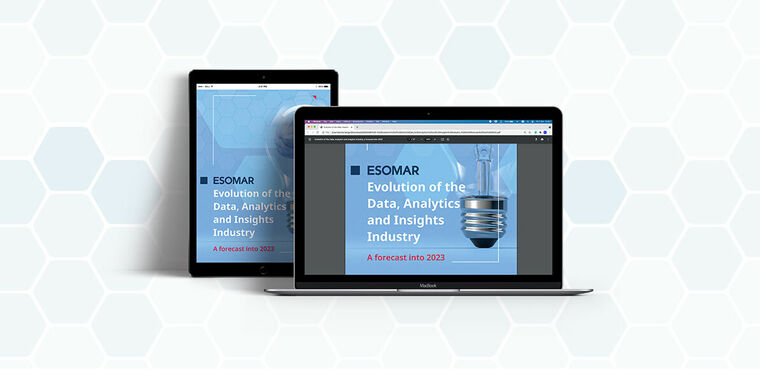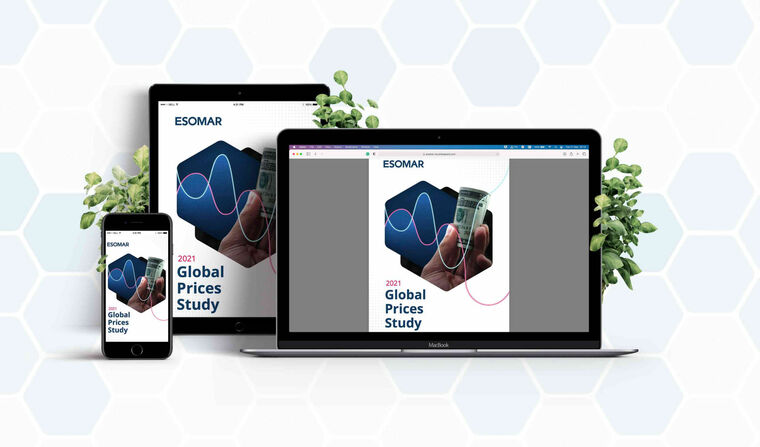The $187 Billion Question: Where to Invest When Everything Is Changing
Discover the key takeaways from Esomar Congress Prague’s panel on investment strategy in uncertain times — exploring how AI, geopolitical shifts, and evolving client needs are reshaping the $147.5B data and insights industry.

At the recent Esomar Congress in Prague, I had the privilege of moderating a panel discussion that brought together three industry leaders to explore one of the most pressing questions facing our sector: How should organisations approach investment strategy in an era marked by geopolitical uncertainty, rapid technological change, and evolving client expectations?
The conversation featured Julie Lizer, Global President of Research & Insights at Mintel and architect of their predictive intelligence platform spanning 35 markets; Simon Chadwick, Managing Partner at Cambiar Consulting (and co-contributor to the Esomar report referenced in the next paragraph); and Tim Wragg, Global CEO of Human8, who brings over 25 years of experience leading insights organizations through periods of transformation.
Our discussion was grounded in Esomar's newly released report, "Forecasting the Data and Insights Industry: A 2027 Outlook," which is now available on the Esomar website. This comprehensive analysis provides essential context for understanding where our industry stands and where it's heading—insights that proved invaluable as our panellists shared their perspectives on navigating the challenges and opportunities ahead.
For those who couldn't attend the session, here are the key themes and takeaways that emerged from both the panel discussion and the broader industry analysis.
The State of Play: A $147.5 Billion Industry in Transition
According to Esomar's latest industry forecast, the data and insights industry reached $147.5 billion in 2024 and is projected to grow to $187 billion by 2027. But beneath these headline figures lies a more complex story of sectoral divergence and strategic reorientation.
Research Software remains the primary growth engine, expanding by 11% and contributing over $6 billion in added value. Within this sector, Digital Data Analytics is the standout performer—the only segment recording double-digit growth. Meanwhile, the more mature Market Research sector grew by a modest 5.1%, adding $2.5 billion and highlighting its profile as steady but no longer explosive.
The AI Inflection Point: From FOMO to Pragmatism
Perhaps no trend looms larger than artificial intelligence. Since 2023, AI has moved decisively from the margins to the mainstream of insights work. Yet the industry is caught between two competing impulses: the fear of missing out and the need for responsible implementation.
Key considerations emerging from industry leaders:
The "black box" problem: As AI tools proliferate, clients increasingly demand transparency about how models are trained, what data they use, and how outputs are generated. Esomar's 2024 guidelines for buyers of AI-based services reflect this shift toward accountability.
Quality over speed: While AI enables faster insights at scale, there's growing recognition that data quality remains paramount. The industry's decades of methodological rigor are precisely what AI systems need to be useful—making traditional research firms natural partners for the AI age, not casualties of it.
Predictive intelligence: Leading firms like Mintel are moving beyond reporting what happened to predicting what will happen next, combining AI with deep domain expertise to deliver "grounded foresight, not guesswork."
Geographic Patterns: Where Growth Is (and Isn't) Happening
The global distribution of insights activity tells its own story:
The US dominates with 57% of global turnover, driven by high media spending, advanced digital infrastructure, and strong enterprise adoption of insights platforms.
Europe holds steady at 20% of the insights turnover, though growth is tempered by regulatory complexity and economic caution. GDPR and the EU AI Act are driving compliance-led research practices that prioritise data quality and transparency.
Asia Pacific shows explosive potential, with some segments growing at 28% CAGR. Mobile-first behaviours, social commerce, and rapidly expanding digital populations are reshaping how insights are gathered and deployed—particularly in India, Southeast Asia, and urban China.
The Democratisation Paradox
Here's a puzzle: insights tools are more accessible than ever, with self-serve platforms and embedded analytics making research capability available across organisations. Yet 52% of research projects are still outsourced to agencies and specialists (Esomar’s Global Users & Buyers of Insights 2025).
What does this tell us? Clients aren't looking for tools alone—they want strategic partners who can provide diagnosis, direction, and decision-ready intelligence. The shift isn't from outsourced to in-house; it's from features to outcomes, from data to actionable clarity.
Investment Priorities: Where Leaders Are Placing Their Bets
Based on the industry landscape, several investment themes are emerging:
Integrated Capabilities Over Point Solutions
The NIQ-GfK merger—the largest M&A deal in a subdued environment—signals consolidation around end-to-end capabilities. Clients want fewer vendors and more coherent ecosystems.
Predictive + Real-Time Intelligence
Firms are combining behavioural data, social listening, panel research, and predictive modelling to move from rear-view reporting to forward-looking strategy.
Compliance-First Architecture
With the European AI Act now in force and GDPR shaping research practices globally, platforms that embed privacy, consent management, and explainability by design are gaining a competitive advantage.
Regional Expansion with Local Depth
Growth markets demand more than translated surveys. Success requires local panels, culturally attuned methodologies, and partnerships with regional specialists who understand regulatory and behavioural nuances.
Human + Machine Models
The most sophisticated firms aren't replacing human expertise with AI—they're augmenting it. Behavioural science, strategic synthesis, and consultative engagement remain irreplaceable, even as automation handles execution at scale.
The Biggest Threats to Watch
While opportunity abounds, leaders also identified critical risks:
Fragmentation and platform fatigue: Clients are overwhelmed by too many dashboards that don't talk to each other. The winners will be those who simplify, integrate, and reduce cognitive load.
Data quality erosion: Pressure for speed and cost efficiency is degrading sample quality, panel engagement, and respondent authenticity. Short-term savings risk long-term credibility.
The "black box" backlash: AI tools that can't explain their logic or disclose their training data will face increasing resistance—from both clients and regulators.
Geopolitical volatility: From US tariffs to China-Taiwan tensions to the Russia-Ukraine conflict, global instability is disrupting supply chains, shifting consumer behaviour, and creating unpredictable investment climates.
Looking Ahead: Grounded Foresight for Uncertain Times
In a world where geopolitical shifts can rapidly reshape markets and consumer sentiment, the insights industry's role has never been more critical—or more complex.
Success will belong to organisations that can balance innovation with reliability, speed with rigour, and automation with human judgment. Those that invest not just in technology but in talent, transparency, and trust will be best positioned to guide their clients through the uncertainty ahead.
The industry isn't just forecasting the future—it's helping to navigate it. And in an age of geopolitical flux and technological disruption, that capability is more valuable than ever.
For the complete analysis and detailed segment breakdowns, download "Forecasting the Data and Insights Industry: A 2027 Outlook" from the Esomar website.


